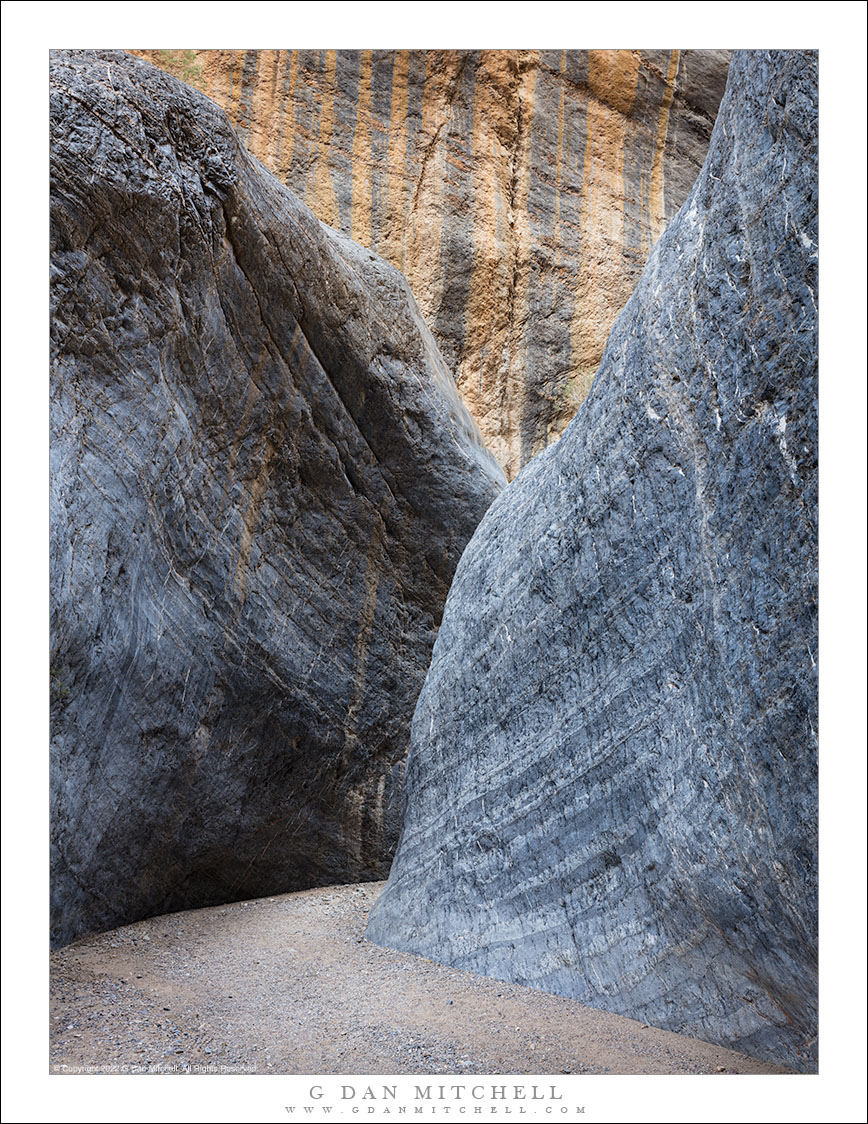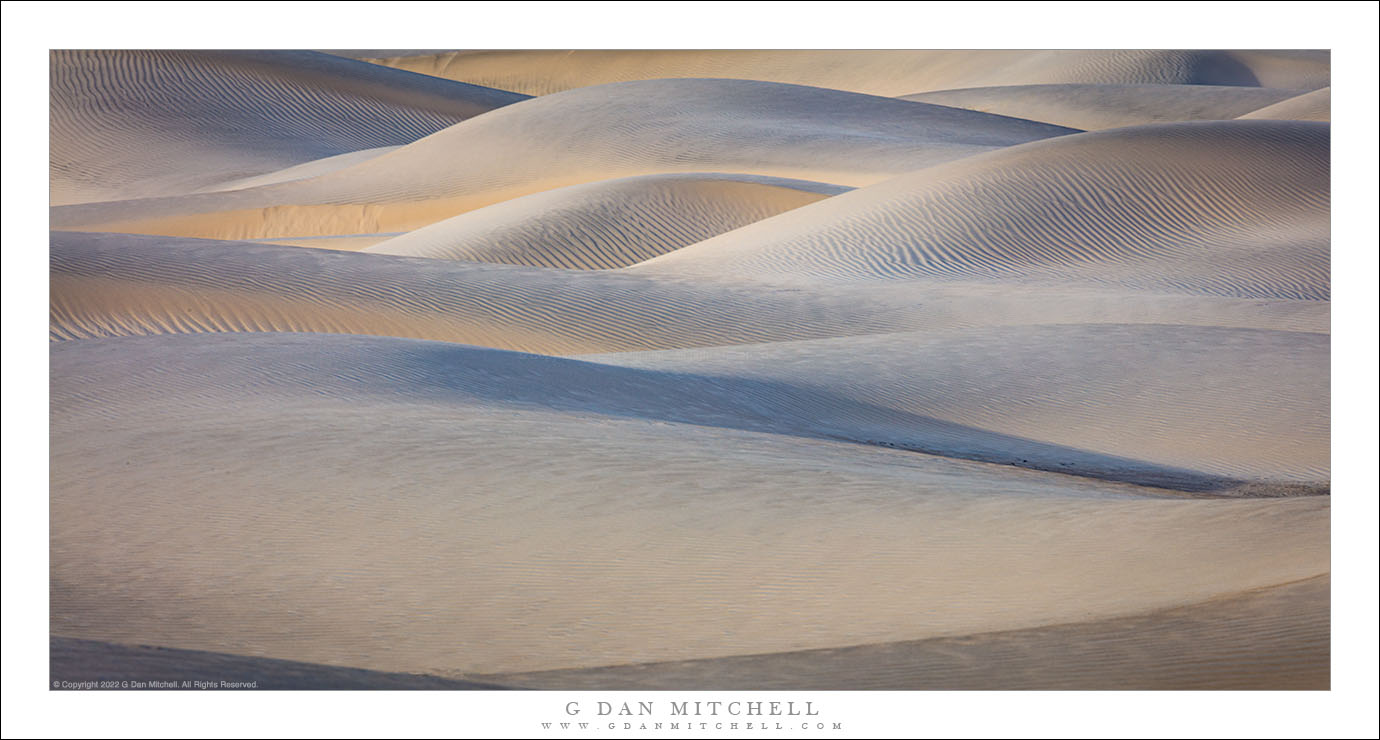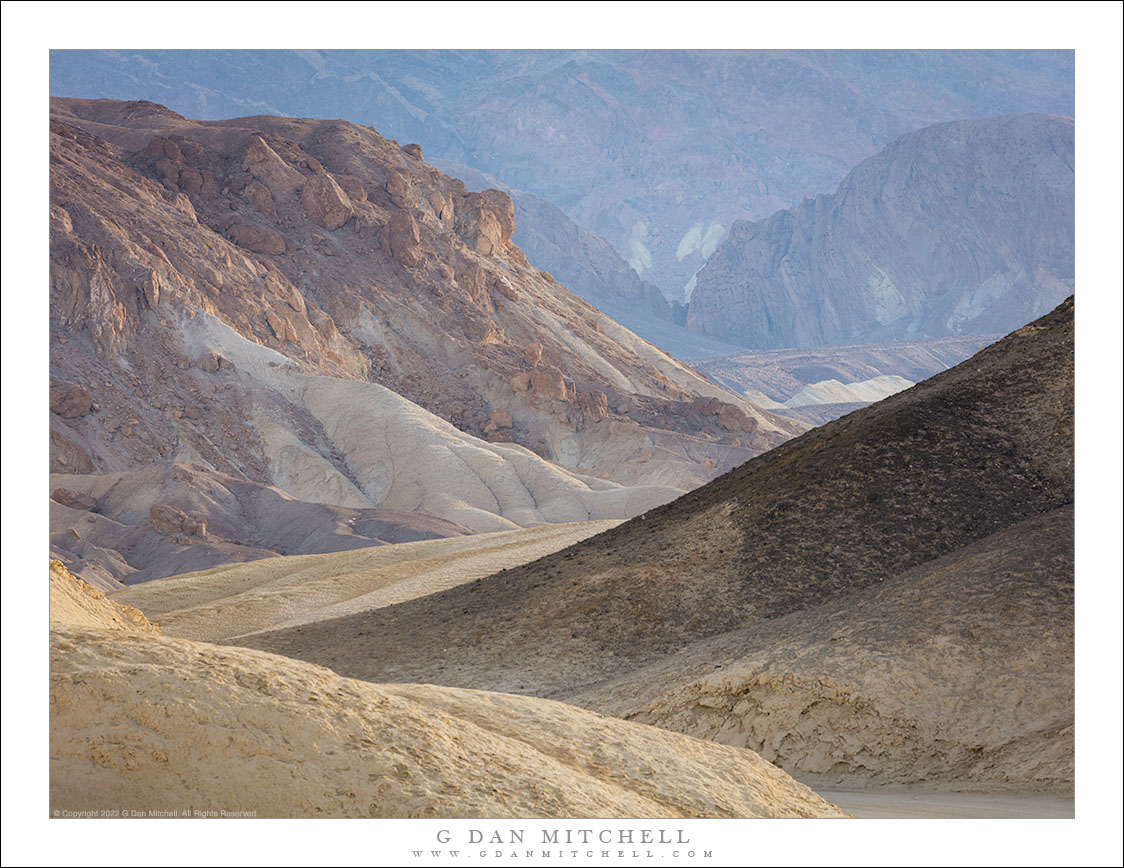
Desert Mountains and Wash, Evening. © Copyright 2022 G Dan Mitchell.
The last of the day’s light illuminates a wash descending though desert mountains, Death Valley National Park.
This feels like a “quiet photograph” to me — a desert scene that appears to be almost entirely static. In fact, one of the most powerful desert experiences I have had in the desert comes from moments in lonely, quiet places where it seems that nothing is moving and that it has been that way for a very long while. It is as close to the feeling of time stopping as we’re likely to experience.
The truth is that I made this photograph in a location that is not exactly quiet and still. Very close to my position there were dozens of people lined up to photograph one of the icons of Death Valley. (This particular icon is interesting but not photographically compelling to me, but as I mentioned in another recent post… my perspective can change!) The photograph illustrates another useful idea in photography, that when you are faced with an obvious subject it is still good to look around at all of the other things that might be worthy of your attention.
G Dan Mitchell is a California photographer and visual opportunist. His book, “California’s Fall Color: A Photographer’s Guide to Autumn in the Sierra” is available from Heyday Books, Amazon, and directly from G Dan Mitchell.
Blog | About | Flickr | Facebook | Email
Links to Articles, Sales and Licensing, my Sierra Nevada Fall Color book, Contact Information.
Scroll down to leave a comment or question. (Click this post’s title first if you are viewing on the home page.)
All media © Copyright G Dan Mitchell and others as indicated. Any use requires advance permission from G Dan Mitchell.



